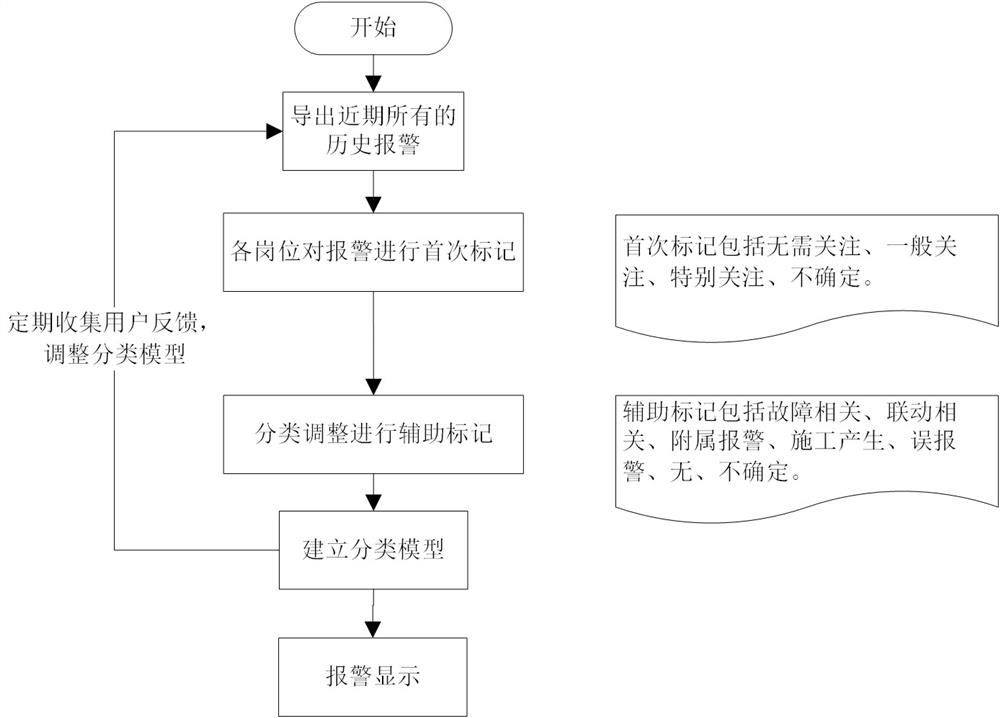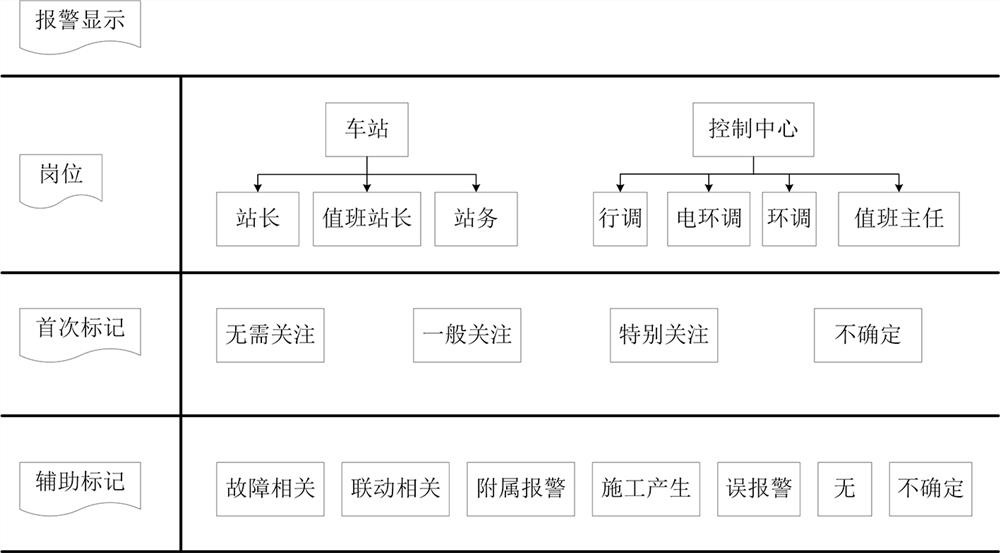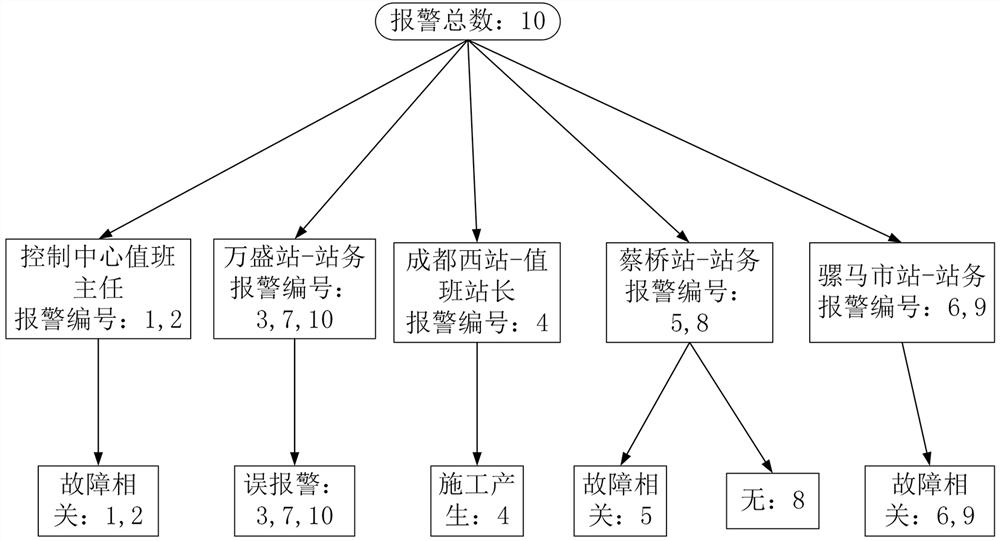A monitoring system alarm information filtering method and system
A technology of alarm information and monitoring system, applied in the field of information processing, which can solve the problems of flooding of alarm information in the monitoring system and the inability to accurately and effectively identify key alarm information, so as to facilitate fault analysis, avoid other accidents, and improve processing efficiency.
- Summary
- Abstract
- Description
- Claims
- Application Information
AI Technical Summary
Problems solved by technology
Method used
Image
Examples
Embodiment 1
[0044] Embodiment 1 is a monitoring system alarm information filtering method, comprising the following steps: S1: Obtain all historical alarm information within a given time interval; S2: Mark for the first time according to the correlation degree of each alarm information attribute with respect to the job position, The first mark is divided into three levels according to the degree of correlation from small to large, namely: no need to pay attention, general attention and special attention; S3: Obtain alarm information related to event results, and define alarm information related to event results as event-related Alarm information, according to the cause of the event result, auxiliary mark the event-related alarm information; S4: According to the auxiliary mark of the event-related alarm information, screen out the alarm information that is not directly related to the event result, and obtain effective alarm information; the event result includes : Generation or execution of...
Embodiment 2
[0053] Embodiment 2 solves the problem of filtering the alarm by marking the alarm itself and predicting the method. Such as figure 1 shown.
[0054] Alarm attributes can be divided into: line (stage), station, subsystem, equipment type, equipment number, equipment brand and model, equipment installation location, alarm time, alarm type, alarm value (analog), etc.
[0055] Personnel positions can be divided into station masters, on-duty station masters, station attendants, etc.; control center dispatching (line dispatching, electrical environment dispatching, maintenance dispatching, duty supervisor, etc.).
[0056] In this way, the problem of filtering alarms is transformed into: for each post, according to the attributes of the alarms, mark them into three categories: "no need to pay attention, general attention, special attention".
[0057] First, export all the recent historical alarms from the comprehensive monitoring system, and mark them for the first time by users in...
Embodiment 3
[0063] Present embodiment 3 is the alarm display process of Chengdu Metro Line 4 comprehensive monitoring system:
[0064] 1. Export all recent historical alarms; (10 months of historical alarms are kept in the monitoring system), as shown in the table below, the content of some alarm information.
[0065]
[0066] The alarm information in the integrated monitoring system is mainly divided into the following categories:
[0067] 1) The main body failure alarm reported by the equipment;
[0068] 2) Sensor detection and alarm, such as smoke, temperature, water level of the pump, etc.;
[0069] 3) The value reported by the device exceeds the limit or the action status alarm, such as the action status of the anti-flood door, the CPU usage rate of the server, etc.;
[0070] 4) Network interruption alarm.
[0071] The attributes of each alarm record include: node name (station, control center, parking lot, depot), Tag point name, Tag point description, device description, alar...
PUM
 Login to View More
Login to View More Abstract
Description
Claims
Application Information
 Login to View More
Login to View More - R&D
- Intellectual Property
- Life Sciences
- Materials
- Tech Scout
- Unparalleled Data Quality
- Higher Quality Content
- 60% Fewer Hallucinations
Browse by: Latest US Patents, China's latest patents, Technical Efficacy Thesaurus, Application Domain, Technology Topic, Popular Technical Reports.
© 2025 PatSnap. All rights reserved.Legal|Privacy policy|Modern Slavery Act Transparency Statement|Sitemap|About US| Contact US: help@patsnap.com



